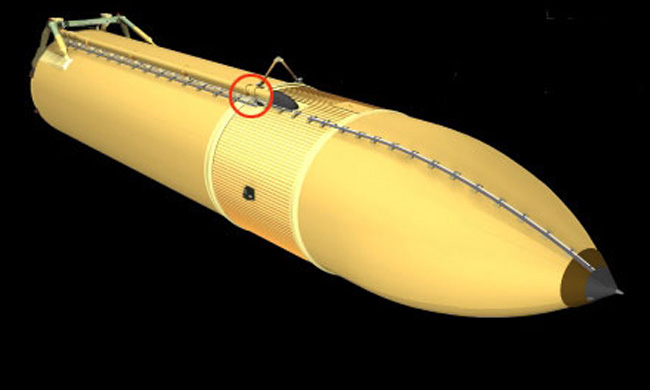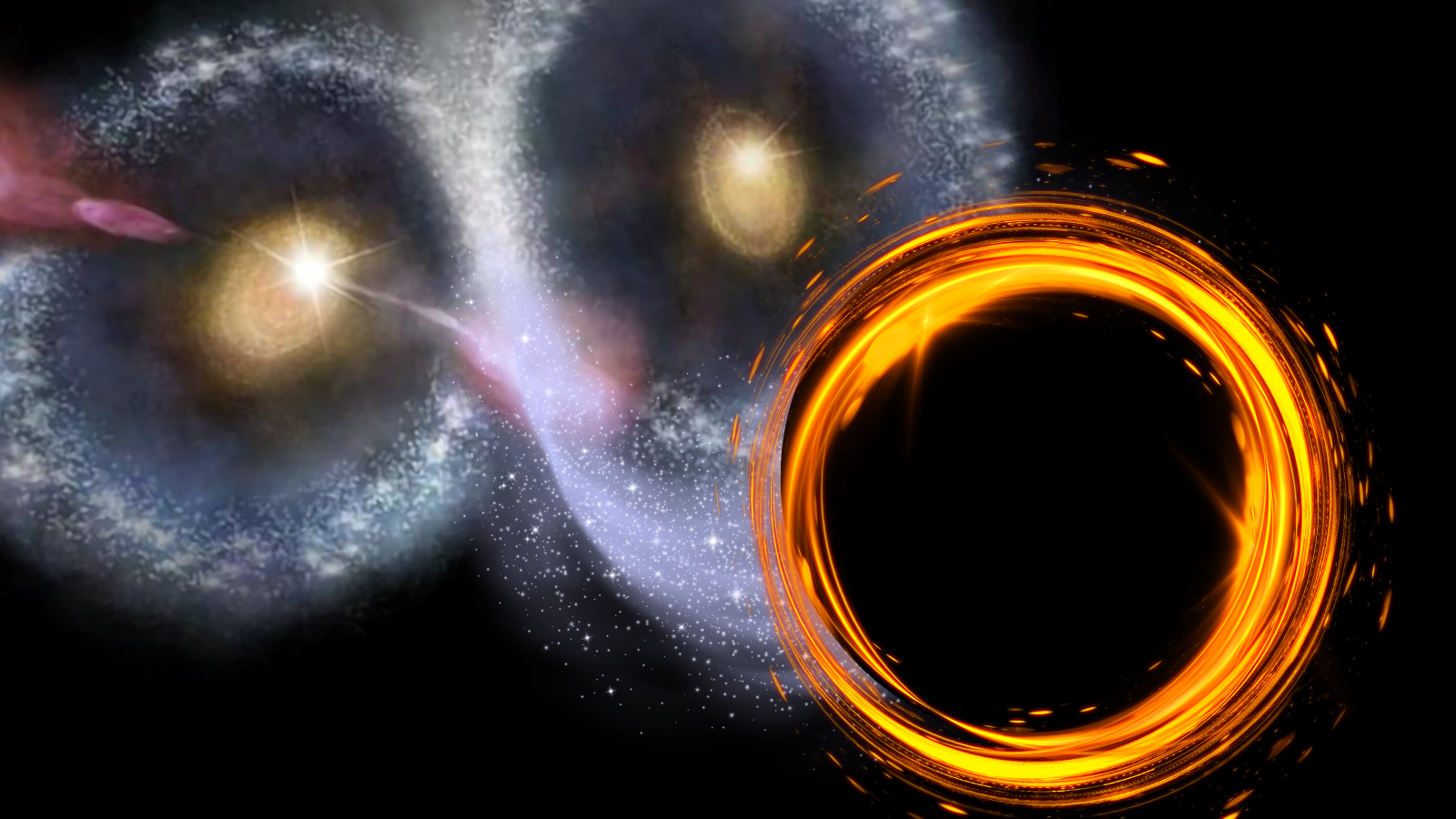Shuttle's Foam Crack Could Delay Launch

This story was updated at 12:16 p.m. EDT.
CAPE CANAVERAL, Fla. - NASA inspectors have found a small crack in the foam insulation of the space shuttle Discovery's external fuel tank, prompting mission managers to discuss whether to press ahead with Tuesday's third launch attempt or stand down for repairs.
The crack is located on the topmost bracket connecting a 17-inch liquid oxygen feedline to Discovery's 15-story external fuel tank. The crack runs between four and five inches long, and between one-eighth and one-fourth of an inch wide.
Analysis is still underway to determine how deep it cuts into the foam insulation covering the shuttle fuel tank, NASA official said.
"We can get to that area if needed," NASA spokesperson Allard Beutel told SPACE.com. "They're discussing that now."

The Mission Management Team (MMT) for Discovery's planned STS-121 spaceflight convened at 10:00 a.m. EDT (1400 GMT) here at NASA's Kennedy Space Center spaceport, where the space shuttle stands poised for launch atop Pad 39B.
The options
Breaking space news, the latest updates on rocket launches, skywatching events and more!
Marion LaNasa, a spokesperson for Lockheed Martin which builds shuttle external tanks for NASA, said that repairing the crack - or doing nothing at all - are among the options available for shuttle managers.
"Repair is an option, fly as is is an option," LaNasa said. "It is not rare to repair damage on the pad. It is more rare to roll back."
LaNasa said the external tank's liquid oxygen feedline is designed to flex during the fuel loading before a launch and unloading after a scrub. That flexibility, he said, allows the 17-inch feedline to handle the super-cold -297 degree Fahrenheit temperature of the liqid oxygen.
LaNasa and NASA officials did not comment on media reports citing that pad workers also found a piece of foam debris on the Mobile Launch Platform supporting Discovery and its launch stack for their planned space shot.
However, images obtained by the Orlando Sentinel and Florida Today, then analyzed by collectSPACE.com appear to show that the debris found by pad workers originated from the region of the tank's cracked foam [see animated image].
Columbia in mind
Shuttle fuel tank foam has been one of NASA's greatest concerns since the 2003 Columbia tragedy, in which a 1.67-pound chunk of foam insulation fell from a bipod ramp and breached the orbiter's left wing leading edge.
The resulting damage left Columbia vulnerable to the extreme temperatures of reentry, leading to its destruction and the loss of seven astronauts during their Feb. 1, 2003 Earth return.
NASA has since replaced that bipod foam ramp with a heater to prevent ice formation, but the newly discovered crack in Discovery's fuel tank is just above the right bracket that anchors the heated bipod - and the attached shuttle - to the tank.
Discovery's STS-121 mission is NASA's second shuttle flight since the Columbia accident. The space agency's first post-Columbia shuttle flight, STS-114 also aboard Discovery, launched in July 2005 and also experienced some insulation debris during liftoff though the one-pound piece of foam did not strike the orbiter.
NASA engineers removed a foam-covered ramp, the source of the STS-114 launch debris, for Discovery's STS-121 mission.
Beutel said an ice inspection team - which routinely scans Discovery's fuel tank for signs of ice debris or damage - found the crack late Monday night after engineers had removed the 526,000 gallons of super-chilled liquid oxygen and liquid hydrogen fuel from its orange external tank.
A press conference is expected no earlier than 1:00 p.m. EDT (1700 GMT) after today's Mission Management Meeting to determine whether to fly Discovery as is with the crack, or repair the damage on the pad.
- Gallery: Rare Space Shuttle Images
- Shuttle Discovery: Complete Coverage
- Great Space Quizzes: Space Shuttle Countdown
- Great Space Quizzes: The Space Shuttle
- Great Space Quizzes: Life in Orbit

Tariq is the award-winning Editor-in-Chief of Space.com and joined the team in 2001. He covers human spaceflight, as well as skywatching and entertainment. He became Space.com's Editor-in-Chief in 2019. Before joining Space.com, Tariq was a staff reporter for The Los Angeles Times covering education and city beats in La Habra, Fullerton and Huntington Beach. He's a recipient of the 2022 Harry Kolcum Award for excellence in space reporting and the 2025 Space Pioneer Award from the National Space Society. He is an Eagle Scout and Space Camp alum with journalism degrees from the USC and NYU. You can find Tariq at Space.com and as the co-host to the This Week In Space podcast on the TWiT network. To see his latest project, you can follow Tariq on Twitter @tariqjmalik.
